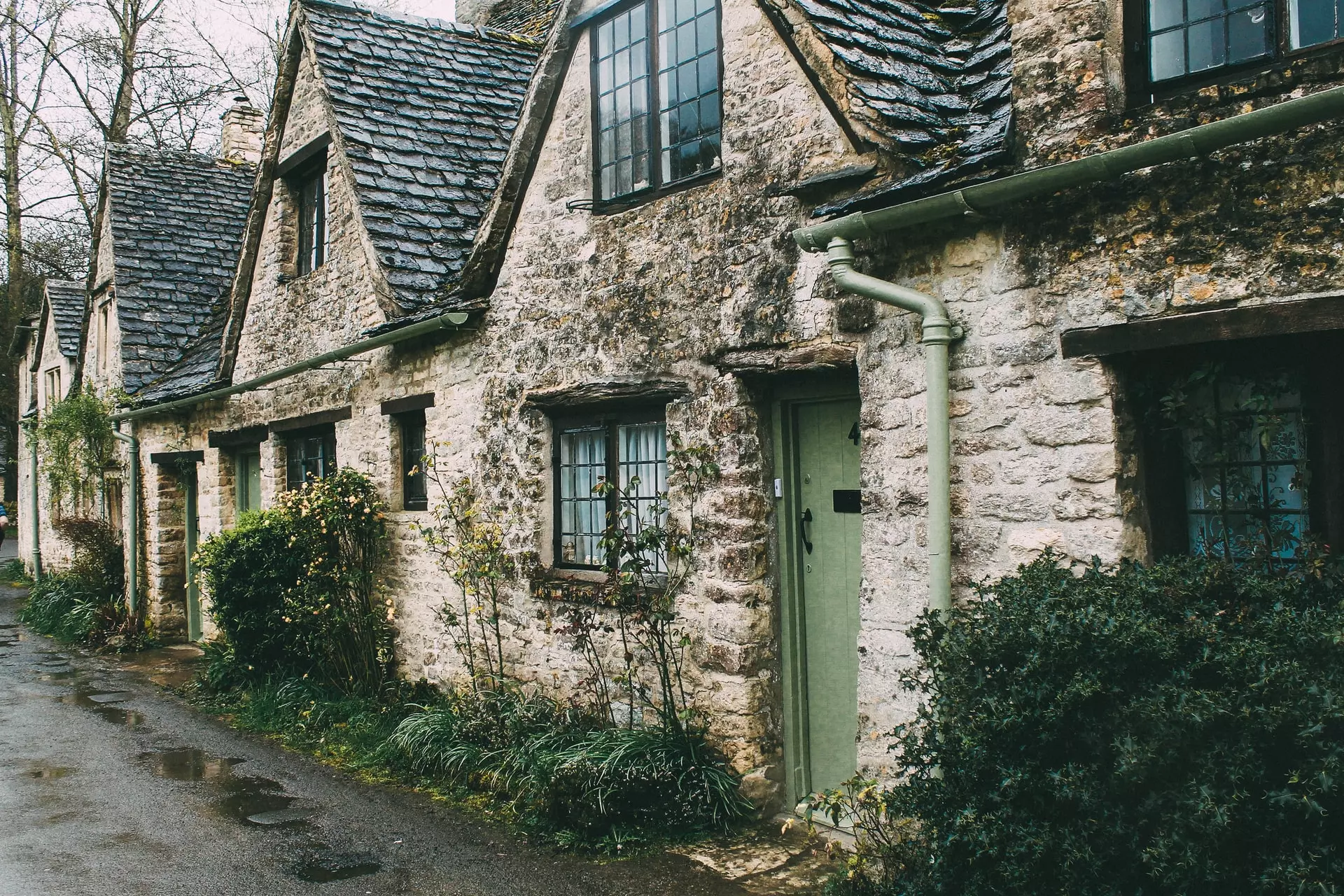Bob Trimble is a chartered architect registered with RIBA with 30 years experience in the industry. Trimble Architects work throughout Hounslow, Twickenham, Richmond, Kingston Upon Thames, Teddington and the surrounding areas of London.
What can you do to a listed building without permission?
Have you questioned: What can you do to a listed building without permission? Find out more about working on listed buildings and the types of work do you need consent for.

What can you do to a Grade II listed building?
A grade II listed building is not just any building. Be it a house, workshop, or any other building. A grade II listed property is a piece of history.
These listed buildings have unique historical or architectural significance that elevates their value above and beyond a typical home.
Due to this level of importance, they are protected by the government with rules and regulations that dictate what you can and can't do to them.
As an owner of a grade II listed property, you may feel inclined to make some alterations as you would do to make any house feel like a home.
You should be aware that doing so may violate those laws put in place to preserve them, and performing certain modifications without local authority consent is a criminal offence.
With this being the case, it's a good idea to get some advice from your local authority or council for any particularly relevant information on the historical importance of your listed house.
What types of work do you need consent for?
If you still want to renovate or make alterations to your grade II home, don't lose hope because there are things you can do without breaking heritage laws. The main point is that you will likely need permission from your local planning authority to do anything major.
Even to make a minor alteration, such as getting rid of the bushes in your garden, listed property owners will still want to seek advice from said local authorities to avoid unintentionally breaking any rules. After all, breaking said rules comes with some potentially severe consequences, such as a listed building enforcement notice, and you will want to avoid those at all costs.
Repairs
You might think that just fixing what is broken isn't making any significant changes and might even be helping to preserve the property. There is a good chance that doing so is one of your listed properties would be a mistake.
Minor repairs such as those that do not affect the character of the property by and noticeable amount are acceptable. Just sewing a small curtain tear shut or replacing a faulty fixture in your bathroom or kitchen shouldn't land you in hot water, but there is a caveat. Often any such small repair work must be done with like-for-like materials. This is to keep in line with the properties historical and architectural authenticity.
If you need to conduct more extensive repairs, it is best to seek advice as your local authority may require you to use specific materials or inspect the damage themselves.
Internal Alterations
Alterations made to a grade II property require written consent. This goes for both internal and external alterations, cosmetic or otherwise.
Just because passers-by can't see any changes you may have made or want to make doesn't make those changes legal if you don't get permission for them. This goes for things like double glazing your windows as well as any alteration that would require walls to be taken down or have their insides exposed.
Window Regulations
Windows are a common point of contention among grade II homeowners. It is an unfortunate fact that homes with historical significance are quite old, and old homes tend not to meet modern standards when it comes to energy efficiency and insulation.
So it comes as no surprise that people often inquire about getting double glazing on their windows only to find it restricted. Written consent is required for any such alterations to windows, especially when stained glass windows are concerned.
Double glazing and other such window modifications or replacements can significantly alter a house's look and feel, interfering with the property's authenticity.
So while not impossible to get permission for, window regulations will make it so getting that double glazed energy efficiency is like pulling teeth from your local authority.

Renovations & extensions
If you have read this far, you are undoubtedly thinking about how it's such a hassle to change even the smallest detail of a listed home. There is no way I could do something major like a renovation.... right? Wrong.
While it is a complicated and long-winded process, it is possible to perform drastic alterations and renovations to a grade II listed house. When embarking on a project like this, the most important thing is to contact and collaborate with your local authority from the very start.
Share your designs, hopes and ideas of what you want to have done with them. They will evaluate your plans for the project to ensure all stages of it are conducive to preserving the properties historical significance and character.

By making large renovations and building extensions to your property in concert with your local authority, you can stop worrying over whether or not something is against the law or not.
You can even get advice from them or call in an architect to help ensure the new additions maintain the style and authenticity of the existing structure.
That's not to say every extension or renovation has to be made to look exactly the same as the existing building. Provided you get written consent; you can even make modern alterations and extensions to the property.
Doing this can actually have an effect that not only accentuates the character of the existing house by contrasting against it, but it can also increase the value and appeal of the property overall.
It is important to note that getting this sort of permission will take a considerable amount of time. Making large changes to a piece of English heritage is not something your local authority will accept lightly. Having a detailed and convincing plan will be the best way to help speed this process along.
Remember that these authorities don't exist simply as roadblocks to prevent changes to your home. Their purpose is to advise on and facilitate historical conservation efforts, but they still want you to feel comfortable and enjoy your home.
What is unauthorised work?
So now you should have a good understanding that when doing any work to a listed property, you need to obtain planning permission or written consent first. What if you don't get those things and do it anyway?
If you alter a listed property that you own without consent, either knowingly or unknowingly, you are performing unauthorised work. It is not just work you do yourself that counts as unauthorised works either.
If you hire a tradesperson or builder to undertake work on your listed property and leave it to them to apply for written consent, you may find yourself unpleasantly surprised when the work is done, and you find out that they forgot to get consent. As the person who instructed the work to be carried out, you are responsible for obtaining permission and liable if work is done without it.
Unauthorised work is something you can inherit when you buy a listed house. If the previous inhabitants had unauthorised work done and it's not discovered until you moved in, you may be held responsible for enforcement action and required to fix it out of pocket. Be sure to check the property you are buying before or as soon as you move in to avoid such a scenario.
What are the consequences of not applying for listed building consent and planning permission?
When you own a listed property, the last thing you want is a listed building enforcement notice. This is the weakest slap on the wrist punishment your local authority may subject you to if you perform unauthorised work.
It allows them to mitigate or reverse any damage your alterations may have had on the property features. Not only will you have to pay for the restoration costs, but you will also likely have to pay a fine. There is no limit on the amount they can fine you for this offence.
If you are in the middle of performing work without planning permission and it is found out, your local authority may give you a stop notice. If you get one of these and ignore it, you have committed another crime on top of the first one. Since in England, performing unauthorised work on a listed building is a criminal offence. In a worst-case scenario, you might be facing up to two years in prison for the crime alongside hefty fines.

Justified Types of Unlawful Works to a Listed Building
When considering what constitutes unlawful work, there are some cases where performing it may be more or less justified. One such case is in the needs of health and safety.
There are cases to be made for unauthorised work to be performed on a listed property if they are in the interest of immediate health and safety concerns. In such cases, the owner must explain why such alterations were necessary and that they were the minimum essential changes to solve the problem with every care taken to preserve the property's historical value.
Are you planning to work on a listed building in Hounslow, Twickenham, Richmond, Kingston Upon Thames or Teddington? We offer advice on planning permission for listed buildings throughout London and the surrounding areas.
Architects Near Me
Are you looking for architects near me? If you are looking for RIBA local architect services in Twickenham and the surrounding areas. Trimble Architects works with clients throughout London and the surrounding areas including:


